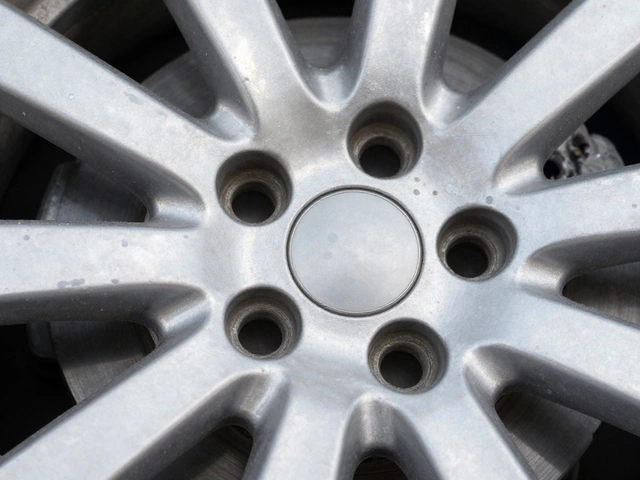So, you're revved up about boosting your car's performance, right? You've probably heard about K&N performance air filters and the promises of more horsepower. But let's get real before you splurge on one of these upgrades.
First things first, why are we even talking about air filters? Well, they play a crucial role in your engine's breathing process. More air usually means better combustion, and better combustion can mean more power. But not all air filters are created equal.
K&N filters are designed to let more air flow through compared to stock paper filters, thanks to their unique cotton gauze construction. This might sound great, but how much horsepower are we really talking about?
Their claim is that these filters can add a few horsepower here and there. However, those numbers can vary depending on several factors. Your car's current setup, driving conditions, and other modifications play a big part. So, seeing a massive jump in power right after swapping your filter might be wishful thinking.
But hey, every bit counts, especially if you're looking to squeeze out every ounce of performance from your ride. And there's more to it—stay tuned as we dive into the nitty-gritty details and tips to get the best out of performance filters like K&N.
- The Basics of Air Filters
- How K&N Claims to Boost Horsepower
- Real-World Performance Gains
- Maintenance and Care Tips
- Are K&N Filters Worth It?
The Basics of Air Filters
Alright, let's break it down. At its core, an air filter is like your car's version of a COVID mask. It's there to ensure only clean air gets into the engine, filtering out dirt, dust, and other debris. This isn't just some fancy add-on; it's fundamental to keeping your engine healthy and running smoothly.
Why's this important? Well, particles getting into the engine can lead to scratches in cylinders and pistons, and over time, that means big trouble with performance and, you know, your wallet.
Types of Air Filters
There are generally two types of air filters: paper (or stock) filters and performance filters like K&N. Stock filters are usually made from pleated paper and are designed for basic engine protection. They do a good job at filtering but aren't great when it comes to maximizing airflow.
K&N and other performance air filters, on the other hand, are made from layers of oil-coated cotton gauze. They're reusable, washable, and claim to allow more air to pass through, potentially increasing horsepower by a bit.
How Filters Work
Think of the air filter as your car's lungs. More airflow means better combustion — which usually results in more power. However, it's essential to balance filtration and airflow. Too much airflow with poor filtration can harm your engine, but with the right balance, you can potentially see gains in performance and efficiency.
| Filter Type | Material | Replace Frequency |
|---|---|---|
| Paper | Pleated paper | Every 12,000-15,000 miles |
| Performance (K&N) | Oil-coated cotton gauze | Wash every 50,000 miles |
Understanding these basics can be a game changer for your car's performance journey. Whether you're going for a K&N or sticking with stock, knowing your filter's role is always a plus.
How K&N Claims to Boost Horsepower
No doubt, popping open a hood and installing a shiny new K&N performance air filter gets many gearheads excited. But, what exactly makes these filters stand out from the rest, and how do they claim to crank up the horsepower?
High Air Flow Design
K&N filters are all about maximizing air flow. The secret sauce is in their oiled cotton gauze material, which allows more air to enter the engine compared to standard paper filters. They claim this design can let in up to 50% more air, resulting in better combustion and potentially more power.
Less Restriction Equals More Power
Think of it like this: less restriction on airflow means your engine doesn't have to work as hard to breathe. According to K&N, this translates into a noticeable boost in engine response and performance. While the exact horsepower increase can depend on your vehicle's make and model, some have reported improvements in the range of 1-4 horsepower.
Reusability and Longevity
Another selling point is reusability. Unlike disposable filters, K&N filters can be cleaned and reused, claiming to last up to 50,000 miles before needing maintenance. It's a pretty good deal if you consider the long-term savings.
Claims vs. Reality
A study from 2022 showed that some vehicles only experienced minor improvements with a K&N filter, while others saw more significant gains. It's crucial to remember that results can vary based on several factors.
| Factor | Impact on Performance Gains |
|---|---|
| Vehicle Model | Varies significantly |
| Current Tuning | Better with custom tuning |
| Driving Conditions | Ideal in clean environments |
So, while a K&N filter might not turn your car into a supercar overnight, it's one of those upgrades that could help eke out that extra bit of horsepower. Just keep your expectations realistic and consider making other complementary upgrades to achieve those power gains you crave.

Real-World Performance Gains
Alright, so you've got your eyes set on a K&N filter for that extra oomph. But how much horsepower are we really talking about? Let's break down what you can expect in the real world.
Generally, a K&N filter isn't going to turn your sedan into a race car overnight. Most users report gaining somewhere between 1 to 5 horsepower. Not exactly earth-shattering, but it can make a difference depending on what you're driving.
Influencing Factors
Several factors can sway these gains. For starters, the condition of your existing air filter is a biggie. If it’s clogged, even a basic upgrade like this can feel substantial. Also, the make and model of your car come into play. High-performance vehicles might benefit more noticeably than your average daily driver.
Also, other mods on your vehicle can amplify the effect of a performance air filter. Pairing it with a free-flowing exhaust system, better spark plugs, or a cold air intake could result in a more noticeable improvement.
Real User Insights
Many drivers appreciate the sound enhancement even more than the power gains. The increased airflow sometimes leads to a throatier engine roar, giving you that sportier driving feel without breaking the bank.
Expectations and Testing
Let's not forget that real-world conditions and driving habits significantly affect performance outcomes. To truly measure any gains, a dyno test before and after installation provides hard data. Such tests can show you're getting that advertised 1-5 boost.
| Condition | Estimated Horsepower Gain |
|---|---|
| Standard Commuter Car | 1-2 HP |
| Performance Vehicle | 3-5 HP |
| With Additional Mods | Potentially More |
Remember, while the horsepower gain might be modest, the benefits of improved throttle response, better engine sound, and potentially better fuel efficiency can sweeten the deal. Carefully consider how these align with your expectations and driving style before making a call.
Maintenance and Care Tips
Keeping your K&N performance air filter in tip-top shape isn't rocket science, but it does need some regular love. A well-maintained filter helps ensure you're squeezing every bit of power and efficiency out of your ride.
Regular Cleaning
First up, let's talk cleaning. Over time, your filter will gather dirt and debris. To keep it working efficiently, K&N recommends cleaning the filter every 50,000 miles under normal driving conditions. However, if you're often hitting dusty trails or live in a smoggy area, you might need to do this more frequently.
- Remove the filter from your car.
- Apply the special K&N cleaning solution. Be generous—let it soak for about 10 minutes.
- Rinse it thoroughly with cool, low-pressure water, flowing from the clean side to the dirty side. This pushes out the grime efficiently.
- Let it air dry completely. Resist the urge to use a hairdryer or any heat source!
Once it's bone dry, you'll need to re-oil it to ensure it catches dirt efficiently.
Re-Oiling
This is crucial, folks. After the filter's dry, use K&N's oil. You don't want to overdo it—just enough oil to coat the gauzy material. A red tint means you're good to go.
- Spray the oil evenly along the crown of each pleat.
- Let it sit for about 20 minutes to allow the oil to spread thoroughly.
- Touch up any light spots with oil.
Troubleshooting and Extras
Keep an eye out for any tears or damage while cleaning. A damaged filter isn't just ineffective; it can also hurt your engine. Have a backup filter handy so you're never caught off-guard.
If you're the numbers type, here's a quick overview of how routine maintenance can improve filter life:
| Condition | Cleaning Frequency | Performance Improvement |
|---|---|---|
| Normal driving | Every 50,000 miles | Optimal efficiency |
| Dusty conditions | Every 30,000 miles | Maintains horsepower gain |
In summary, consistent maintenance of your performance air filter ensures you’re getting the most out of your investment. Following these steps will not only help extend the life of the filter but also keep your engine breathing easy.

Are K&N Filters Worth It?
Let's tackle the big question many car enthusiasts like to debate over: are K&N filters worth your hard-earned money? If you're all about squeezing out every bit of performance, it might just be a worthy investment.
K&N filters are known for their durability. Unlike typical paper filters that need regular replacements, these filters are washable and reusable. That means you might save some bucks in the long haul since you won't be buying replacements as often. How cool is that?
But durability isn't the only thing they bring to the table. They promise better airflow. This increase in airflow can potentially lead to a slight bump in horsepower, usually around 1-4 horsepower, depending on your car's make and model. And hey, every little bit helps, right?
When They Shine
Where K&N filters really make sense is in places where you need better performance and drive in dusty or often dirty conditions. Their high-flow technology can help engines breathe with ease, especially when the stock filters get easily clogged.
Also, if you've done some aftermarket tuning or performance beef-ups, these filters could be the missing piece to optimize those mods.
Possible Downsides
Of course, there's a flip side. Some folks argue that the increased airflow can sometimes come at the expense of slightly reduced filtration. So, while your engine may breathe easier, it might also suck in more dirt if the filter isn't maintained correctly.
Cleaning and oiling the filter requires effort and some get hands-on, which might not be everyone's cup of tea. But if you're alright with minor maintenance, it's a small price to pay for possible gains.
Making Your Decision
In deciding if a K&N filter is worth it, think about your driving habits and expectations. They won't transform your car into a race car overnight, but they offer a feather-touch advantage that can complement other performance upgrades. Plus, the long-term cost efficiency due to its reusability is nothing to sneeze at.
Ultimately, weighing the pros and cons with your vehicle's specific needs might reveal if this investment is right for your ride.






